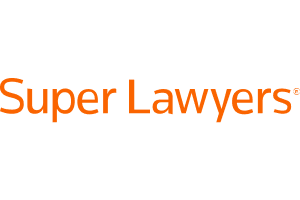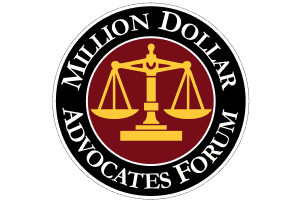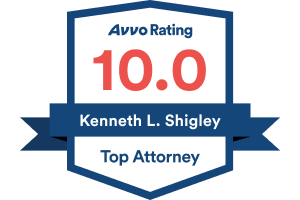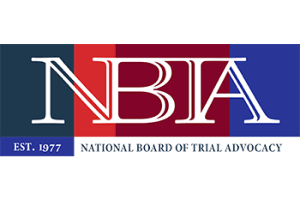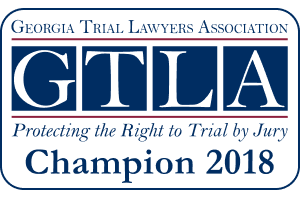Chapter 4. Ethics & Professionalism – Communications with represented persons
4:10. Communications with Represented Persons
Rule of Professional Conduct 4.2(a) provides:
A lawyer who is representing a client in a matter shall not communicate about the subject of the representation with a person the lawyer knows to be represented by another lawyer in the matter, unless the lawyer has the consent of the other lawyer or is authorized to do so by constitutional law or statute.
This Rule is intended to “provide protection of the represented person against overreaching by adverse counsel, safeguard the client-lawyer relationship from interference by adverse counsel, and reduce the likelihood that clients will disclose privileged or other information that might harm their interests.” 1 The Comments clarify that this prohibition applies only if the lawyer knows the person is represented, and only with regard to the subject matter of the representation. A lawyer may still contact a person whom he does not know is represented, and a lawyer may still deal with a represented party on other matters so long as the subject of the representation is not broached. But lawyer may not communicate directly with a party whose lawyer has moved to withdraw but is still listed as counsel of record.2 Moreover, a lawyer may not orchestrate contacts regarding the subject of the representation by others, including the client or an investigator.3
The close questions under Rule 4.2 often relate to communications with employees of a represented corporation. Comment 4A to the rule clarifies that the rule prohibits contact with a person having managerial responsibility and any other person whose act or omission may be imputed to the organization. Much litigation and commentary has arisen on the question of what categories of employees and managers may be contacted by or on behalf of a lawyer representing a client adverse to their employer.4 An attorney may interview an employee of a corporate defendant without the consent of either the corporation or its counsel if the employee is not the person for whose acts or omissions the corporation is being sued and if the person is not an officer or director or other employee with authority to bind the corporation.5 The fact that an organization has a general counsel does not prevent communication with all current employees.6
In contacting either a current or former employee who falls outside the category of those with whom communication is prohibited, the lawyer should make clear that he is not disinterested and represents a person whose interests are adverse to the corporation,7 and should not discuss communications that are privileged.8 The fact that an employee has signed a confidentiality order with the employer does not necessarily bar contact by a lawyer, as the analysis must be case specific.9
1 ABA Comm. on Ethics and Prof’l Responsibility, Formal Op. 95-396 (1995). See also Askins v. Colon, 270 Ga. App. 737, 740, 608 S.E.2d 6 (2004) (“rule is designed to protect a represented party’s right to effective representation of counsel by preventing adverse counsel from taking advantage of such party through undisclosed contact”) (quoting Sanifill of Georgia, Inc. v. Roberts, 232 Ga. App. 510, 511, 502 S.E.2d 343 (1998)).
2 Clos v. Pugia, 204 Ga. App. 843, 420 S.E.2d 774 (1992) (pre-Rules case, disqualifying lawyer who engaged in ex parte communication with opposing party, whose counsel had moved to withdraw but was still counsel of record, even though lawyer did not act willfully and communication was initiated by opposing party.)
3 ABA Comm. on Ethics and Prof’l Responsibility, Formal Op. 95-396 (1995) (lawyer would be ethically responsible for ex parte contacts made by investigator over whom she has direct supervisory authority). See, e.g., Midwest Motor Sports, Inc. v. Arctic Cat Sales, Inc., 144 F. Supp. 2d 1147, 1157 (D.S.D. 2001) (“attorney may not avoid [rule 4.2] by directing an investigator or anyone else to contact [prohibited] employees”); Ex parte Lammon, 688 So. 2d 836 (Ala. Civ. App. 1996) (lawyer went with plaintiff son to visit defendant mother in nursing home); Trumbull Cty. Bar Assn. v. Makridis, 77 Ohio St. 3d 73, 1996-Ohio-351, 671 N.E.2d 31 (1996) (lawyer directed his client’s call to represented defendant).
4 See generally Richard L. Scheff, Getting Witnesses to Talk, 27 Litig. 38, 41-45 (2001); Sherman L. Cohn, The Organizational Client: Attorney-Client Privilege and the No-Contact Rule, 10 Geo. J. Legal Ethics 739 (1997); Ernest F. Lidge, III, The Ethics of Communicating with an Organization’s Employees: An Analysis of the Unworkable “Hybrid” or “Multifactor” Managing-Speaking-Agent, ABA and Niesig Tests and a Proposal for a “Supervisor” Standard, 45 Ark. L. Rev. 801 (1993); Jerome N. Krulewitch, Ex Parte Communications with Corporate Parties: The Scope of the Limitations on Attorney Communications with One of Adverse Interest, 82 Nw. U. L. Rev. 1274 (1988); Samuel R. Miller & Angelo J. Calfo, Ex Parte Contact with Employees and Former Employees of a Corporate Adversary: Is It Ethical?, 42 Bus. Law. 1053 (1987); Louis A. Stahl, Ex Parte Interviews with Enterprise Employees: A Post-Upjohn Analysis, 44 Wash. & Lee L.Rev. 1181 (1987).
5 State Bar of Ga., Formal Advisory Op. 87-6 (1987) (decided in reference to Model Rule 4.2, which had been proposed in Georgia but was not adopted until 13 years later). See also In re Domestic Air Transp. Antitrust Litigation, 141 F.R.D. 556, 561, 35 Fed. R. Evid. Serv. 207 (N.D. Ga. 1992) (“Rule 4.2 does not prohibit communications with former employees of a defendant corporation as long as the former employees are not in fact represented by the corporation’s attorney”); State Bar of Ga., Formal Advisory Op. 94-3 (1994) (“lawyer may properly contact and interview former employees … provided that: (1) the lawyer makes full disclosure as to the identity of his/her client; and (2) the former employee consents”).
6 In re Disciplinary Proceedings Regarding Doe, 876 F. Supp. 265 (M.D. Fla. 1993). Accord, Terra Intern., Inc. v. Mississippi Chemical Corp., 913 F. Supp. 1306, 1317 (N.D. Iowa 1996); Miano v. AC & R Advertising, Inc., 148 F.R.D. 68 (S.D. N.Y. 1993); Michaels v. Woodland, 988 F. Supp. 468 (D.N.J. 1997); ABA Comm. on Ethics and Prof’l Responsibility, Formal Op. 95-396 (1995) (general counsel cannot assert blanket representation of all employees).
7 ABA/BNA Lawyers’ Manual on Professional Conduct, §15 LMPC 67. See, e.g., Illinois Ethics Opinion 96-1 (1996).
8 See, e.g., Nestor v. Posner-Gerstenhaber, 857 So. 2d 953 (Fla. Dist. Ct. App. 3d Dist. 2003) (“[i]nformal ex parte interviews with former employees are allowed … and ex parte interviews with current employees may be allowed as well”); Alaska Ethics Op. 91-1 (1991).
9 ABA/BNA Lawyers’ Manual on Professional Conduct, §18 LMPC 710, Court Decisions, December 4, 2002.
On May 22, 2018, former State Bar of Georgia president Ken Shigley will be a candidate for election to the Georgia Court of Appeals. The only other candidate is Ken Hodges, a former Dougherty County District Attorney. Ken Hodges was the Democratic Party nominee for Attorney General in 2010.


